Poseokjeongji (Pavillon Poseokjeong) (경주 포석정지)
.0M 2020-10-23
816, Namsansunhwan-ro, Gyeongju-si, Gyeongsangbuk-do
+82-54-745-8484
Se trouvant sur un rocher près d’une rivière, Poseokjeongji (Pavillon Poseokjeong - superficie de 7.432㎡) a été désigné comme monument privé Nº 1, le 21 janvier 1963. Originellement, il était situé où se trouvait la villa royale de la dynastie Silla (57 B.C.~A.D. 935), mais le bâtiment n’existe plus, et c’est seulement une voie naviguable en pierre de la forme d’une fontaine qui reste là. Poseokjeongji (Pavillon Poseokjeong) a été appelé ainsi à cause de sa forme de cannelures de roches, aérée et de la forme d’un ormeau. Poseokjeongji (Pavillon Poseokjeong) est faite de 63 matériaux rocheux. Il est large de 35cm, profond de 26cm de moyenne, et sa longueur totale est d’environ 10 mètres. On raconte que l’eau de la Vallée Namsan y a été apportée par une tortue en pierre, qui la faisait sortir de sa bouche mais la tortue en pierre n’existe plus de nos jours. C’est le lieu où les rois de la dynastie Silla étaient venus avec leur personnel officiel et nobles. On dit aussi que ceux-ci laissaient flotter leur verre de vin sur l’eau qui s’écoulait le long des cannelures de pierre, et ils y récitaient des poèmes avant que leur verre ne s’approchent d’eux en flottant. A coté de Poseokjeongji (Pavillon Poseokjeong), la vallée Poseok était très bien aimée des gens de la dynastie Silla pour son eau pure et ses belles caractéristiques. C’est pourquoi, le palace villa of Silla a été construite là. De nos jours, il y a forêts de zelkova, des pins et des bambous qui conservent l’atmosphère intime et relaxante de ce lieu.
Gyeongju Oreung (경주 오릉)
1.7Km 2020-05-12
38-9, Geumseong-ro, Gyeongju-si, Gyeongsangbuk-do
+82-54-779-6100
Le monument historique n°172, dénommé
'Oreung' renvoit aux 5 tombes royales. Il s'agit des tombes des quatres premiers
rois de Silla qui portent le nom de "Bak" et de la femme de Bakhyeokgeose,
le premier roi de Silla. A l'est d'Oreung se trouve "Sungdeokjeon"
et derrière ce monument se trouve "Aryeongjeong".
KELIMGUNG [Korea Quality] / 계림궁 [한국관광 품질인증]
1.9Km 2023-04-13
932, Poseok-ro, Gyeongju-si, Gyeongsangbuk-do
+82-10-2705-8121
According to a Korean myth, Gyerim Forest in Banwolseong Fortress, Gyeongju is the birthplace of Silla Kingdom founder Kim Alji (of Gyeongju Kim’s Clan) about two thousand years ago. Gyerimgung Hanok Pension is located 2 kilometers from Banwolseong Fortress and is named after the forest. Inside the gate are guestrooms named “Yoseok Room” with a large window in the detached building, “Sirim Room” and “Alji Room” in the main building, and “Asadal Room” and “Asanyeo Room” right next to it. The guesthouse has a shared kitchen and two “wondumak” (a Korean lookout hut on stilts usually in a melon field for guests to use). Barbecue facilities are also available upon reservation. The guesthouse offers a number of fun traditional programs including “Starting a Fire for Traditional Korean Iron Pot,” “Neolttwigi,” and “Yunnori.” Gyeongju Oreung in the vicinity of the guesthouse is a great place to take a walk. Nearby popular tourist destinations include Banwolseong Fortress, Cheomseongdae Observatory, and Daereungwon Tomb Complex. The guesthouse can be a great choice for those looking for a quiet place to stay overnight because it's situated in a residential area slightly off the main tourist zone.
Gyeongjuhanok 1st [Korea Quality] / 경주 한옥 1번가 [한국관광 품질인증]
2.0Km 2021-04-01
20, Cheonwon 1-gil, Gyeongju-si, Gyeongsangbuk-do
010-9505-5367
As a new hanok guesthouse, Gyeongju Hanok 1st is located at the entrance to Cheonwon Village, Gyeongju, Gyeongsangbuk-do. It has various modern amenities while preserving the features of a traditional Korean house. The guesthouse is kept cool in summer and warm in winter, so guests can experience the traditional Korean house. It has various rooms in different sizes that can accommodate 3 - 8 people. There is a stand-alone guesthouse furnished with kitchen and bathroom as well. All other rooms also have a bathroom inside, but the kitchen must be shared among the guests. There are no beds in the room as is typical of a traditional Korean house, but there are high-quality sheets and blankets for the comfort of the guests. The guesthouse has a large front yard with a miniature traditional Korean house with dolls adorned in traditional clothes, not to mention other traditional artifacts. Popular tourist destinations within the vicinity of the guesthouse include Anapji Pond, Cheomseongdae, and Gyeongju National Museum.
Wadamjung [Korea Quality] / 와담정 [한국관광 품질인증]
2.1Km 2023-04-13
18, Cheonwon 1-gil, Gyeongju-si, Gyeongsangbuk-do
+82-54-772-5400 / +82-10-6571-3412
Wadamjung in Cheonwon Village, Gyeongju is a modern traditional Korean guesthouse built in May 2017, with both the features of a traditional Korean house and modern facilities such as air conditioner and bathroom. It has a total of nine guestrooms that can accommodate three to six people, and there is a kitchen that can be shared among the guests. A large group can book a stand-alone guestroom that can accommodate up to 12 people, inclusive of a kitchen. There are various traditional artifacts and items with which to play a traditional game in the large yard, such as Jegi (Korean shuttlecock game) and Tuho (Arrow-throwing). In addition, there are a number of tourist destinations such as Cheomseongdae in Wolseong District, with lots of historical sites in Gyeongju as well as Gyeongju National Museum.
Gyeongju Oreung Hanok [Korea Quality] / 경주오릉한옥 [한국관광 품질인증/Korea Quality]
2.1Km 2023-04-13
12-17, Gukdang 2-gil, Gyeongju-si, Gyeongsangbuk-do
This hanok (traditional Korean house) guesthouse is located right across from the Five Royal Tombs in Gyeongju. Because there are no obstructions on the way, the guesthouse enjoys a remarkable view of the ancient city. Located about 2.5 km from Gyeongju Intercity Bus Termina and about 2 km from Gyeongju Historic Areas, this guesthouse has a dignified yet comfortable atmosphere.
It is run by a mother-and-daughter team, whose attention to detail and care can be felt tangibly in the comfortably furnished rooms: well-maintained lawn and trees, double doors that help to prevent drafts and noises, and clean white bedding appreciated by many visitors. Rooms with ondol (under-the-floor heating system) are ideal for two. From walls covered by traditional Korean paper to clean and comfortable bedding, the room exudes comfort. A raised floor space in front of the room is a great place to see the scenery and a great place for photography.
Another strength of Gyeongju Oreung Hanok guesthouse is its accessibility. Hwangnidan-gil Street, a bustling street full of restaurants and cafes, is only a 15-min walk away, while Gyeongju’s famous sights such as Cheomseongdae Observatory, Daereungwon Ancient Tomb Complex, Donggung Palace and Wolji Pond, and Gyeongju National Museum are only a 10-min drive away.
Centre de recherche sur les forêts à Gyeongju, région Gyeongsangbuk-do (경상북도 산림환경연구원)
2.4Km 2021-03-12
367, Tongil-ro, Gyeongju-si, Gyeongsangbuk-do
+82-54-778-3813
Le centre de recherche sur les forêts situé au pied du mont Namsan à Gyeongju sert d'espace de repos et de lieu d'apprentissage concernant les environnements naturels. Il se distingue par un environnement harmonieux entre ses plantes sauvages et ses arbres.
Festival Silla Sori, Emille (신라소리축제 에밀레전)
2.5Km 2019-11-11
Gyeongsangbuk-do, Gyeongju-si, Chamseong-ro 147
1899-1098
Le festival Silla Sori traite de l’histoire de la cloche divine du roi Seongdeok, inauguré durant la période Silla en Corée. Le festival a lieu à Gyeongju et traite donc d’un patrimoine culturel vieux de plus de 1000 ans. Le festival est organisé par la chaîne BBS (chaîne bouddhiste en Corée), et est sponsorisé par la ville de Gyeongju, la région Gyeongsangbuk-do, par le temple Bulguksa et par le ministère de la culture et des sports en Corée. Le festival occupe un vaste champ d’herbe autour de l’observatoire Cheomseogdae. Vous pourrez ainsi apprécier la culture Silla de plus près durant la période du festival.
Pont Woljeonggyo (월정교)
2.5Km 2025-03-26
274, Gyo-dong, Gyeongju-si, Gyeongsangbuk-do
Ce pont a été construit à Gyo-dong dans la ville de Gyeongju-si (région Gyeongsangbuk-do) pendant la période du royaume unifié de Silla. Il a été endommagé sous la dynastie Joseon avant d'être restauré en avril 2018 en tant que plus grand pont en bois de Corée.
Selon le livre Samguksagi, il fut bâti durant la 19e année du règne du roi Gyeongdeokwang (760) du royaume unifié de Silla afin de relier Wolseong et Namsan à Gyeongju.
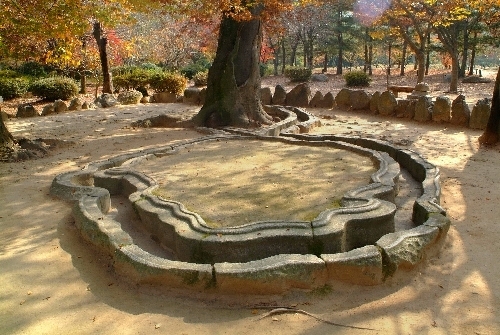
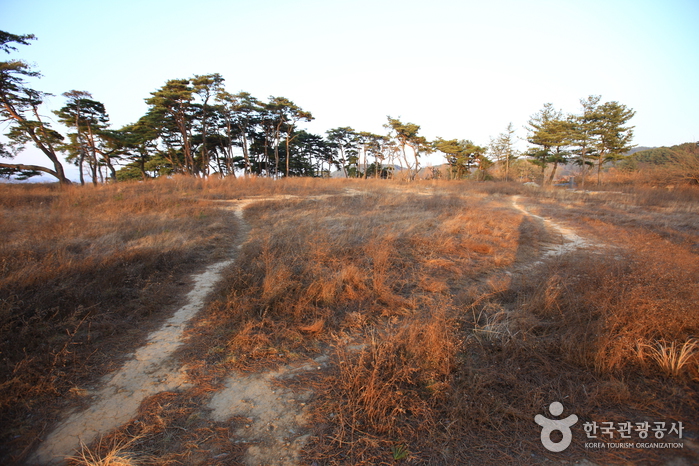
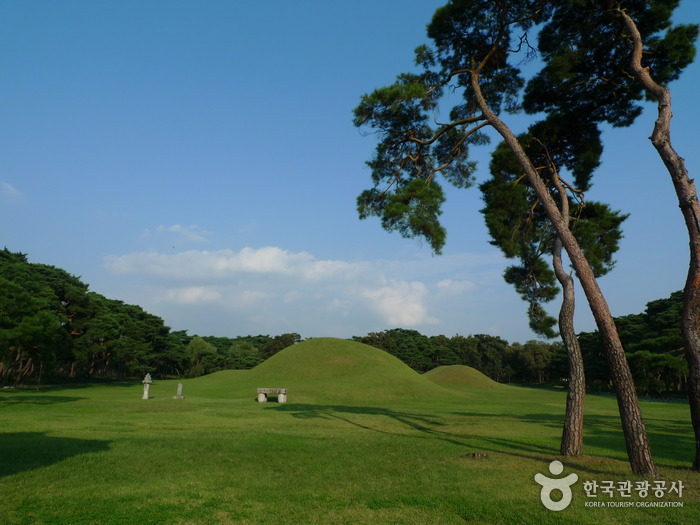
![KELIMGUNG [Korea Quality] / 계림궁 [한국관광 품질인증]](http://tong.visitkorea.or.kr/cms/resource/67/2543967_image2_1.jpg)
![Gyeongjuhanok 1st [Korea Quality] / 경주 한옥 1번가 [한국관광 품질인증]](http://tong.visitkorea.or.kr/cms/resource/10/2530210_image2_1.jpg)
![Wadamjung [Korea Quality] / 와담정 [한국관광 품질인증]](http://tong.visitkorea.or.kr/cms/resource/35/2557635_image2_1.jpg)
![Gyeongju Oreung Hanok [Korea Quality] / 경주오릉한옥 [한국관광 품질인증/Korea Quality]](http://tong.visitkorea.or.kr/cms/resource/35/2706135_image2_1.jpg)
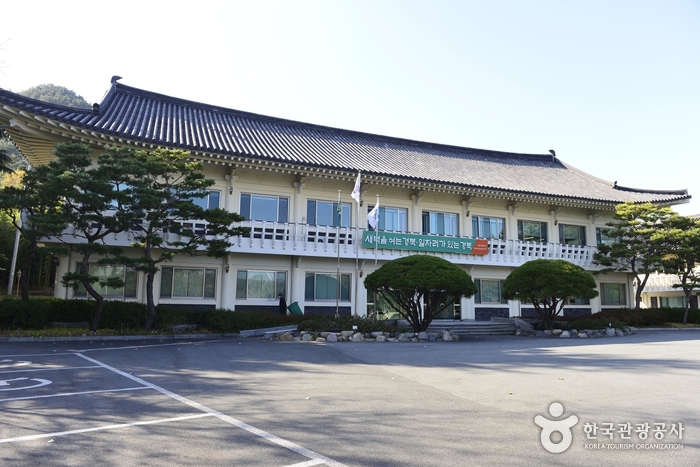
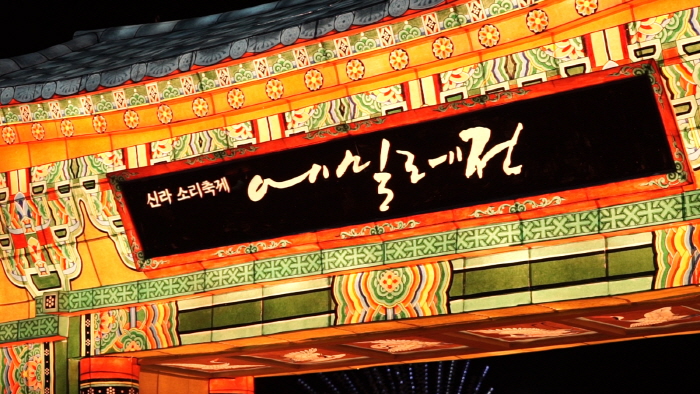

 Français
Français
 한국어
한국어 English
English 日本語
日本語 中文(简体)
中文(简体) Deutsch
Deutsch Español
Español Русский
Русский